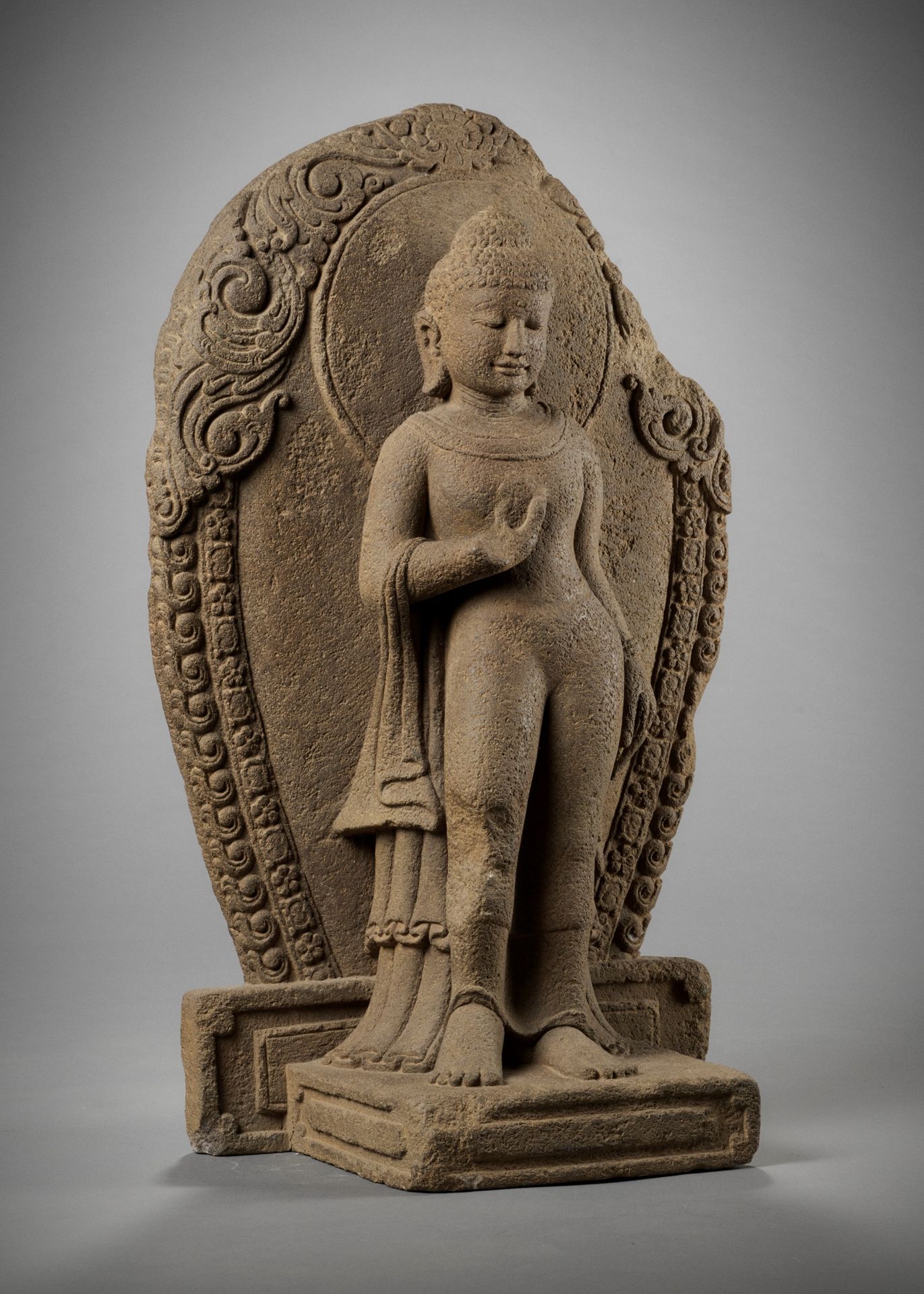Description
A RARE ANDESITE STATUE OF BUDDHA, CENTRAL JAVA, 9TH CENTURY
A RARE ANDESITE STATUE OF BUDDHA, CENTRAL JAVA, 9TH CENTURY Standing on a rectangular base, backed by a large, towering aureole and halo. His right hand is raised toward the chest and the left is lowered and holding the hem of his long flowing robe. The serene face with full lips and heavy-lidded downcast eyes below gently arched eyebrows centered by an urna, flanked by long pendulous earlobes. The hair arranged in tight curls with an ushnisha. Provenance: La Balaustra, Archeologia Classica Orientale e Precolombiana, Bologna, 1980. An important Italian private collection, acquired from the above. Condition: Superb condition, commensurate with age. Expected losses, erosion, wear and extensive weathering. Weight: 73.3 kg Dimensions: Height 80.5 cm A Buddha image of ineffable quiet and stillness has been carved from rough volcanic rock. The profile and dome of the head are broad, allowing for a round tapering of the forehead, cheeks, and chin that, once finished with a polish, produce an overall impression of smoothness, belying the porous nature of the stone, which has resisted over a millennium of weather exposure with a stunning ease. The sculptors working on the great stone monuments of 9th century Central Java produced some of the most beautifully proportioned Buddhist sculptures of any period or medium. The present statue is almost certainly from Borobudur or a related temple site, such as Sewu or Ngawen in Central Java. Built by the Shailendra dynasty around 825 CE, Borobudur is one of the greatest Buddhist monuments of all time, having one of the largest and most complete ensembles of Buddhist narrative relief panels in the world. Structured as a mandala of stacked platforms representing the three planes of existence in Mahayana cosmology (the world of desire, the world of forms, and the world of formlessness), Borobodur invites pilgrims circumambulating its didactic panels and sculpture to shuck the trappings of their perceived reality and realize their true inherent formlessness. Literature comparison: Three examples in the British Museum collected by Sir Thomas Stamford Raffles in the early 19th century demonstrate that not all Borobudur heads were created equal (1859,1228.175; 1859,1228.176; & 1859,1228.177). Some have softer, more delicate brows while others show harder features and more pronounced monobrows. Some have spire-like ushnishas, while others are broader and more pleasing. Of the three British Museum heads, it is the most celebrated and widely exhibited one (1859,1228.176) that bears the closest resemblance to the present lot, illuminating its quality. Auction result comparison: Compare a related andesite statue of Buddha, from Borobudur, dated to the 9th century, and of similar size, sold in these rooms, in Fine Chinese Art, Buddhism and Hinduism, on 25 April 2020, lot 461, for EUR 30,000.
1307
A RARE ANDESITE STATUE OF BUDDHA, CENTRAL JAVA, 9TH CENTURY
